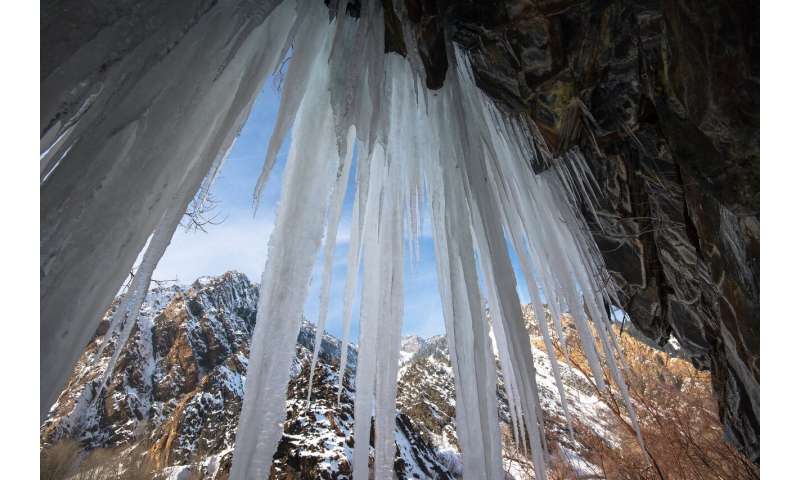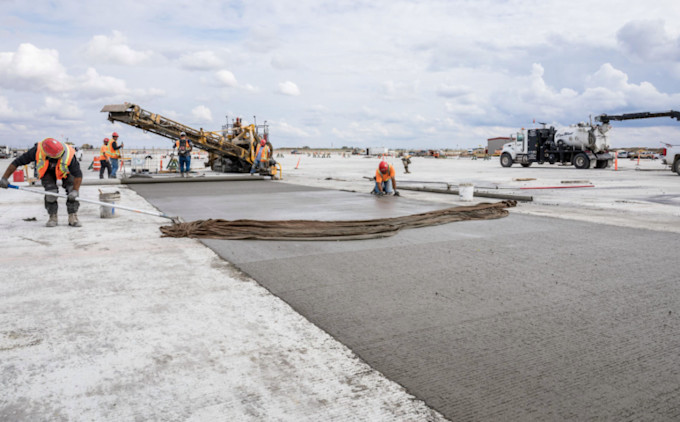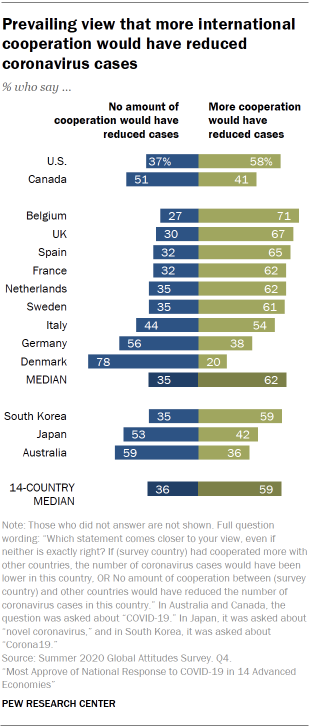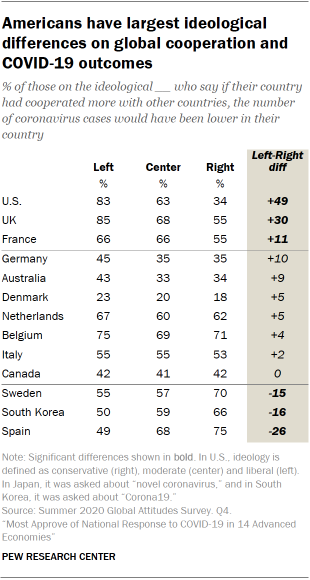by University of Arizona

Credit: Unsplash/CC0 Public Domain
A University of Arizona-led team has nailed down the temperature of the last ice age—the Last Glacial Maximum of 20,000 years ago—to about 46 degrees Fahrenheit (7.8 C).
Their findings allow climate scientists to better understand the relationship between today's rising levels of atmospheric carbon dioxide—a major greenhouse gas—and average global temperature.
The Last Glacial Maximum, or LGM, was a frigid period when huge glaciers covered about half of North America, Europe and South America and many parts of Asia, while flora and fauna that were adapted to the cold thrived.
"We have a lot of data about this time period because it has been studied for so long," said Jessica Tierney, associate professor in the UArizona Department of Geosciences. "But one question science has long wanted answers to is simple: How cold was the ice age?"
Tracking Temperature
Tierney is lead author of a paper published today in Nature that found that the average global temperature of the ice age was 6 degrees Celsius (11 F) cooler than today. For context, the average global temperature of the 20th century was 14 C (57 F).
"In your own personal experience that might not sound like a big difference, but, in fact, it's a huge change," Tierney said.
She and her team also created maps to illustrate how temperature differences varied in specific regions across the globe.
"In North America and Europe, the most northern parts were covered in ice and were extremely cold. Even here in Arizona, there was big cooling," Tierney said. "But the biggest cooling was in high latitudes, such as the Arctic, where it was about 14 C (25 F) colder than today."
Their findings fit with scientific understanding of how Earth's poles react to temperature changes.
"Climate models predict that the high latitudes will get warmer faster than low latitudes," Tierney said. "When you look at future projections, it gets really warm over the Arctic. That's referred to as polar amplification. Similarly, during the LGM, we find the reverse pattern. Higher latitudes are just more sensitive to climate change and will remain so going forward."
Counting Carbon
Knowing the temperature of the ice age matters because it is used to calculate climate sensitivity, meaning how much the global temperature shifts in response to atmospheric carbon.
Tierney and her team determined that for every doubling of atmospheric carbon, global temperature should increase by 3.4 C (6.1 F), which is in the middle of the range predicted by the latest generation of climate models (1.8 to 5.6 C).
Atmospheric carbon dioxide levels during the ice age were about 180 parts per million, which is very low. Before the Industrial Revolution, levels rose to about 280 parts per million, and today they've reached 415 parts per million.
"The Paris Agreement wanted to keep global warming to no larger than 2.7 F (1.5 C) over pre-industrial levels, but with carbon dioxide levels increasing the way they are, it would be extremely difficult to avoid more than 3.6 F (2 C) of warming," Tierney said. "We already have about 2 F (1.1 C) under our belt, but the less warm we get the better, because the Earth system really does respond to changes in carbon dioxide."
Making a Model
Since there were no thermometers in the ice age, Tierney and her team developed models to translate data collected from ocean plankton fossils into sea-surface temperatures. They then combined the fossil data with climate model simulations of the LGM using a technique called data assimilation, which is used in weather forecasting.
"What happens in a weather office is they measure the temperature, pressure, humidity and use these measurements to update a forecasting model and predict the weather," Tierney said. "Here, we use the Boulder, Colorado-based National Center for Atmospheric Research climate model to produce a hindcast of the LGM, and then we update this hindcast with the actual data to predict what the climate was like."
In the future, Tierney and her team plan to use the same technique to recreate warm periods in Earth's past.
"If we can reconstruct past warm climates," she said, "then we can start to answer important questions about how the Earth reacts to really high carbon dioxide levels, and improve our understanding of what future climate change might hold."
Explore further Ancient plankton help researchers predict near-future climate
More information: Glacial cooling and climate sensitivity revisited, Nature (2020).
A University of Arizona-led team has nailed down the temperature of the last ice age—the Last Glacial Maximum of 20,000 years ago—to about 46 degrees Fahrenheit (7.8 C).
Their findings allow climate scientists to better understand the relationship between today's rising levels of atmospheric carbon dioxide—a major greenhouse gas—and average global temperature.
The Last Glacial Maximum, or LGM, was a frigid period when huge glaciers covered about half of North America, Europe and South America and many parts of Asia, while flora and fauna that were adapted to the cold thrived.
"We have a lot of data about this time period because it has been studied for so long," said Jessica Tierney, associate professor in the UArizona Department of Geosciences. "But one question science has long wanted answers to is simple: How cold was the ice age?"
Tracking Temperature
Tierney is lead author of a paper published today in Nature that found that the average global temperature of the ice age was 6 degrees Celsius (11 F) cooler than today. For context, the average global temperature of the 20th century was 14 C (57 F).
"In your own personal experience that might not sound like a big difference, but, in fact, it's a huge change," Tierney said.
She and her team also created maps to illustrate how temperature differences varied in specific regions across the globe.
"In North America and Europe, the most northern parts were covered in ice and were extremely cold. Even here in Arizona, there was big cooling," Tierney said. "But the biggest cooling was in high latitudes, such as the Arctic, where it was about 14 C (25 F) colder than today."
Their findings fit with scientific understanding of how Earth's poles react to temperature changes.
"Climate models predict that the high latitudes will get warmer faster than low latitudes," Tierney said. "When you look at future projections, it gets really warm over the Arctic. That's referred to as polar amplification. Similarly, during the LGM, we find the reverse pattern. Higher latitudes are just more sensitive to climate change and will remain so going forward."
Counting Carbon
Knowing the temperature of the ice age matters because it is used to calculate climate sensitivity, meaning how much the global temperature shifts in response to atmospheric carbon.
Tierney and her team determined that for every doubling of atmospheric carbon, global temperature should increase by 3.4 C (6.1 F), which is in the middle of the range predicted by the latest generation of climate models (1.8 to 5.6 C).
Atmospheric carbon dioxide levels during the ice age were about 180 parts per million, which is very low. Before the Industrial Revolution, levels rose to about 280 parts per million, and today they've reached 415 parts per million.
"The Paris Agreement wanted to keep global warming to no larger than 2.7 F (1.5 C) over pre-industrial levels, but with carbon dioxide levels increasing the way they are, it would be extremely difficult to avoid more than 3.6 F (2 C) of warming," Tierney said. "We already have about 2 F (1.1 C) under our belt, but the less warm we get the better, because the Earth system really does respond to changes in carbon dioxide."
Making a Model
Since there were no thermometers in the ice age, Tierney and her team developed models to translate data collected from ocean plankton fossils into sea-surface temperatures. They then combined the fossil data with climate model simulations of the LGM using a technique called data assimilation, which is used in weather forecasting.
"What happens in a weather office is they measure the temperature, pressure, humidity and use these measurements to update a forecasting model and predict the weather," Tierney said. "Here, we use the Boulder, Colorado-based National Center for Atmospheric Research climate model to produce a hindcast of the LGM, and then we update this hindcast with the actual data to predict what the climate was like."
In the future, Tierney and her team plan to use the same technique to recreate warm periods in Earth's past.
"If we can reconstruct past warm climates," she said, "then we can start to answer important questions about how the Earth reacts to really high carbon dioxide levels, and improve our understanding of what future climate change might hold."
Explore further Ancient plankton help researchers predict near-future climate
More information: Glacial cooling and climate sensitivity revisited, Nature (2020).
DOI: 10.1038/s41586-020-2617-x , www.nature.com/articles/s41586-020-2617-x
Journal information: Nature
Provided by University of Arizona
Journal information: Nature
Provided by University of Arizona










![Thursday APRIL 13, 2006 Page A19 [How will history remember Ralph?] Sunday APRIL 9, 2006 Page E7 [The ascent and abdication of King Ralph] Calgary-07/12/04-Alberta Premier Ralph Klein held up a paid in full sign after announcing Monday morning that the province's debt of $3.7-billion has been paid off in full ahead of schedule. Klein made the announcement following his annual Stampede breakfast at the McDougall Centre in Calgary. Photo by Colleen De Neve/Calgary Herald (For City story by Tony Seskus And David Heyman) Date published July 13, 2004 Page A1 * Calgary Herald Merlin Archive * ORG XMIT: POS2013031514485344](https://postmediacalgaryherald2.files.wordpress.com/2020/01/a3-01apr-paid-in-full-ag-bw.jpg?quality=100&strip=all&w=564)




